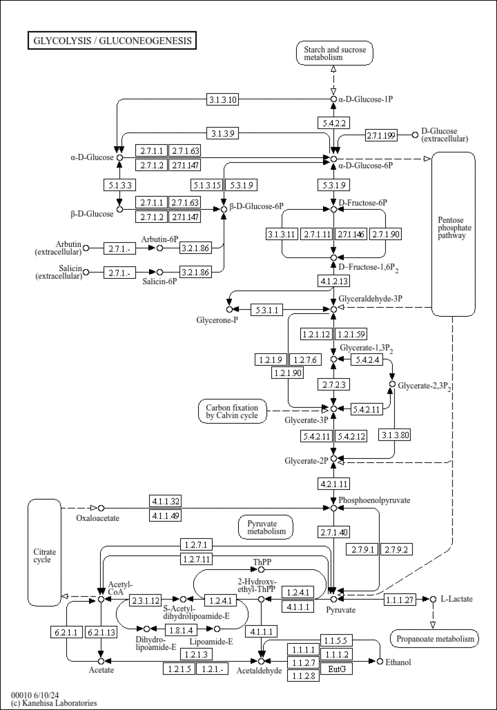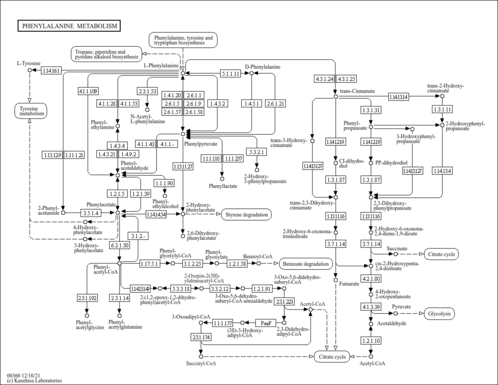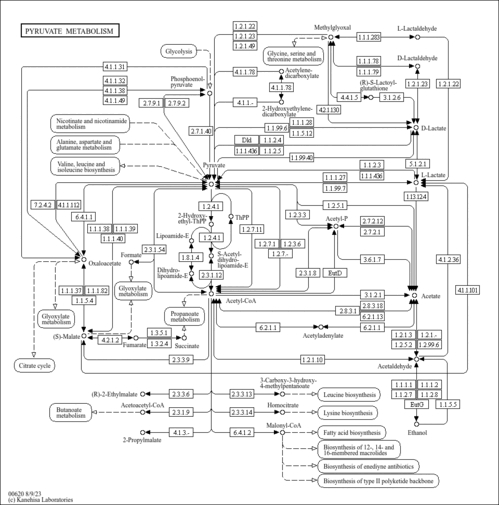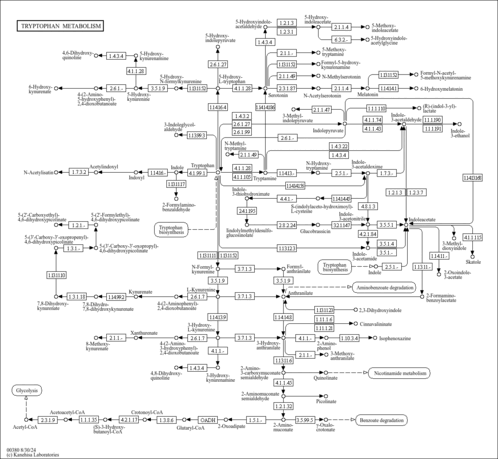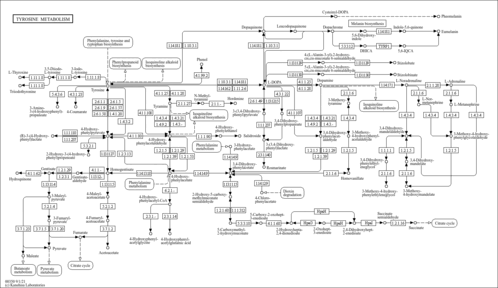| General Reference | - Hohmann, S., Cederberg, H. (1990). "Autoregulation may control the expression of yeast pyruvate decarboxylase structural genes PDC1 and PDC5." Eur J Biochem 188:615-621.2185016
- Johnston, M., Hillier, L., Riles, L., Albermann, K., Andre, B., Ansorge, W., Benes, V., Bruckner, M., Delius, H., Dubois, E., Dusterhoft, A., Entian, K. D., Floeth, M., Goffeau, A., Hebling, U., Heumann, K., Heuss-Neitzel, D., Hilbert, H., Hilger, F., Kleine, K., Kotter, P., Louis, E. J., Messenguy, F., Mewes, H. W., Hoheisel, J. D., et, a. l. .. (1997). "The nucleotide sequence of Saccharomyces cerevisiae chromosome XII." Nature 387:87-90.9169871
- Dickinson, J. R., Lanterman, M. M., Danner, D. J., Pearson, B. M., Sanz, P., Harrison, S. J., Hewlins, M. J. (1997). "A 13C nuclear magnetic resonance investigation of the metabolism of leucine to isoamyl alcohol in Saccharomyces cerevisiae." J Biol Chem 272:26871-26878.9341119
- Iding, H., Siegert, P., Mesch, K., Pohl, M. (1998). "Application of alpha-keto acid decarboxylases in biotransformations." Biochim Biophys Acta 1385:307-322.9655924
- Hohmann, S., Meacock, P. A. (1998). "Thiamin metabolism and thiamin diphosphate-dependent enzymes in the yeast Saccharomyces cerevisiae: genetic regulation." Biochim Biophys Acta 1385:201-219.9655908
- Dickinson, J. R., Harrison, S. J., Hewlins, M. J. (1998). "An investigation of the metabolism of valine to isobutyl alcohol in Saccharomyces cerevisiae." J Biol Chem 273:25751-25756.9748245
- Eberhardt, I., Cederberg, H., Li, H., Konig, S., Jordan, F., Hohmann, S. (1999). "Autoregulation of yeast pyruvate decarboxylase gene expression requires the enzyme but not its catalytic activity." Eur J Biochem 262:191-201.10231381
- Muller, E. H., Richards, E. J., Norbeck, J., Byrne, K. L., Karlsson, K. A., Pretorius, G. H., Meacock, P. A., Blomberg, A., Hohmann, S. (1999). "Thiamine repression and pyruvate decarboxylase autoregulation independently control the expression of the Saccharomyces cerevisiae PDC5 gene." FEBS Lett 449:245-250.10338141
- Flikweert, M. T., de Swaaf, M., van Dijken, J. P., Pronk, J. T. (1999). "Growth requirements of pyruvate-decarboxylase-negative Saccharomyces cerevisiae." FEMS Microbiol Lett 174:73-79.10234824
- Neuser, F., Zorn, H., Berger, R. G. (2000). "Generation of odorous acyloins by yeast pyruvate decarboxylases and their occurrence in sherry and soy sauce." J Agric Food Chem 48:6191-6195.11141278
- Dickinson, J. R., Harrison, S. J., Dickinson, J. A., Hewlins, M. J. (2000). "An investigation of the metabolism of isoleucine to active Amyl alcohol in Saccharomyces cerevisiae." J Biol Chem 275:10937-10942.10753893
- Vuralhan, Z., Morais, M. A., Tai, S. L., Piper, M. D., Pronk, J. T. (2003). "Identification and characterization of phenylpyruvate decarboxylase genes in Saccharomyces cerevisiae." Appl Environ Microbiol 69:4534-4541.12902239
- Dickinson, J. R., Salgado, L. E., Hewlins, M. J. (2003). "The catabolism of amino acids to long chain and complex alcohols in Saccharomyces cerevisiae." J Biol Chem 278:8028-8034.12499363
- Huh, W. K., Falvo, J. V., Gerke, L. C., Carroll, A. S., Howson, R. W., Weissman, J. S., O'Shea, E. K. (2003). "Global analysis of protein localization in budding yeast." Nature 425:686-691.14562095
- Ghaemmaghami, S., Huh, W. K., Bower, K., Howson, R. W., Belle, A., Dephoure, N., O'Shea, E. K., Weissman, J. S. (2003). "Global analysis of protein expression in yeast." Nature 425:737-741.14562106
- Peng, J., Schwartz, D., Elias, J. E., Thoreen, C. C., Cheng, D., Marsischky, G., Roelofs, J., Finley, D., Gygi, S. P. (2003). "A proteomics approach to understanding protein ubiquitination." Nat Biotechnol 21:921-926.12872131
|
|---|
